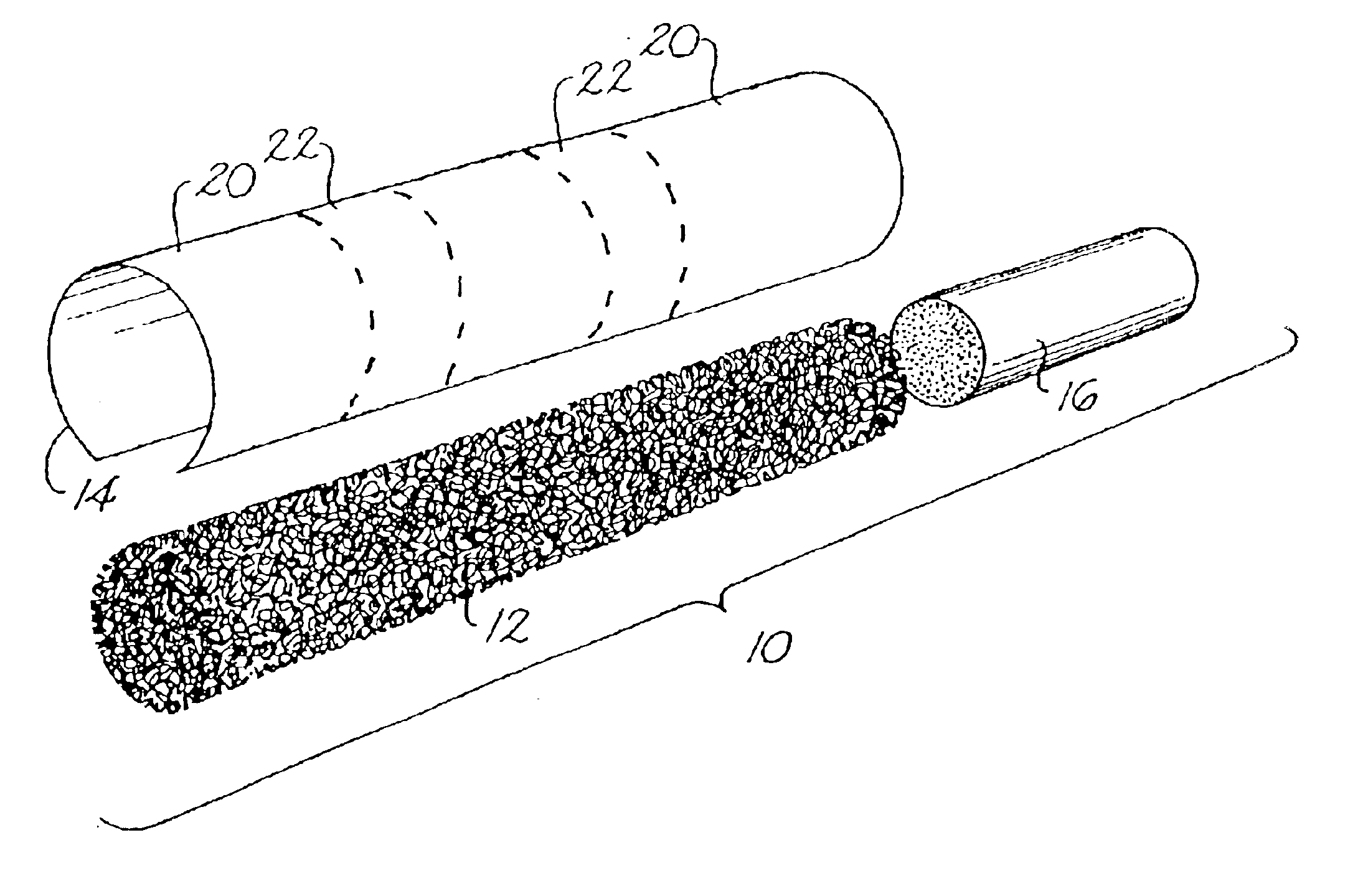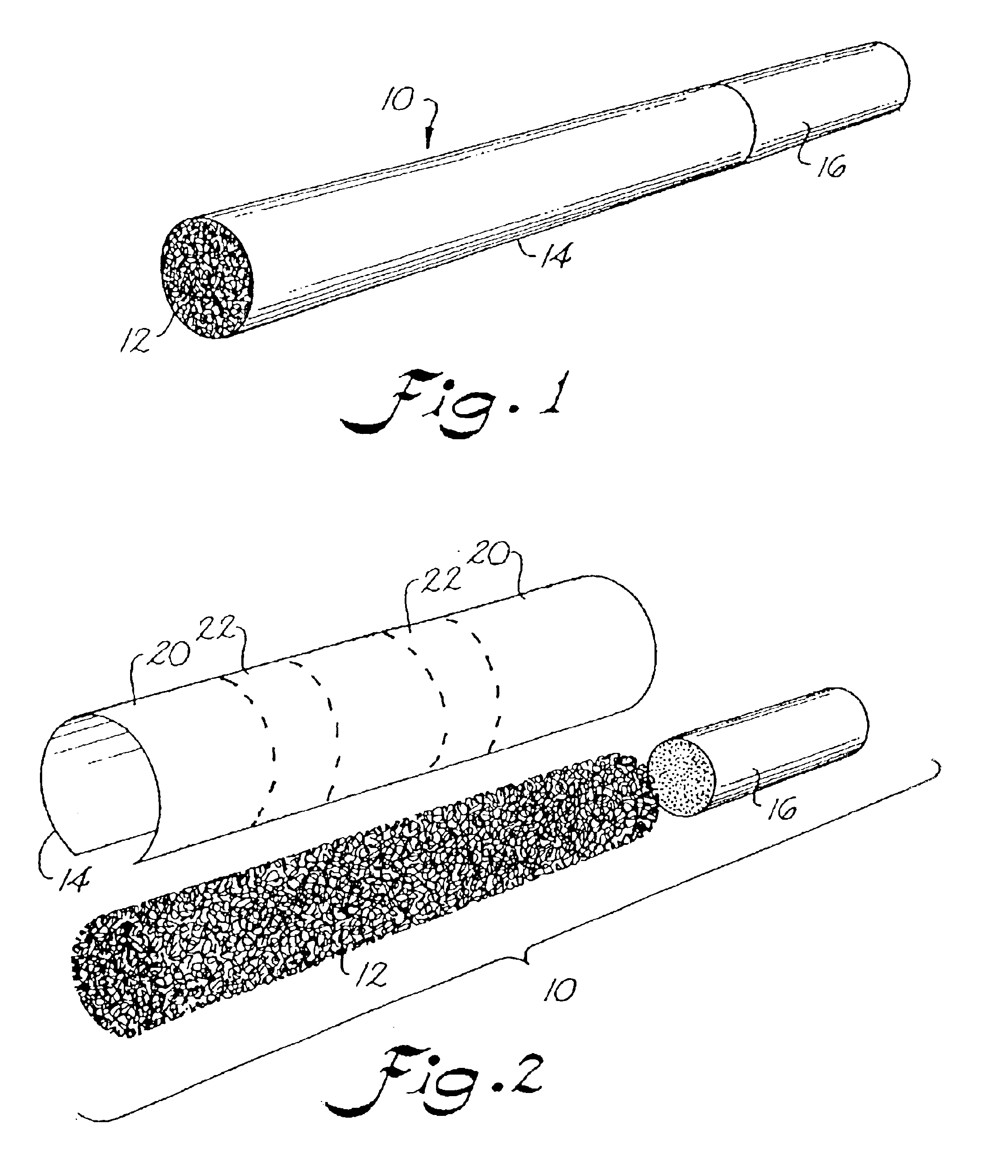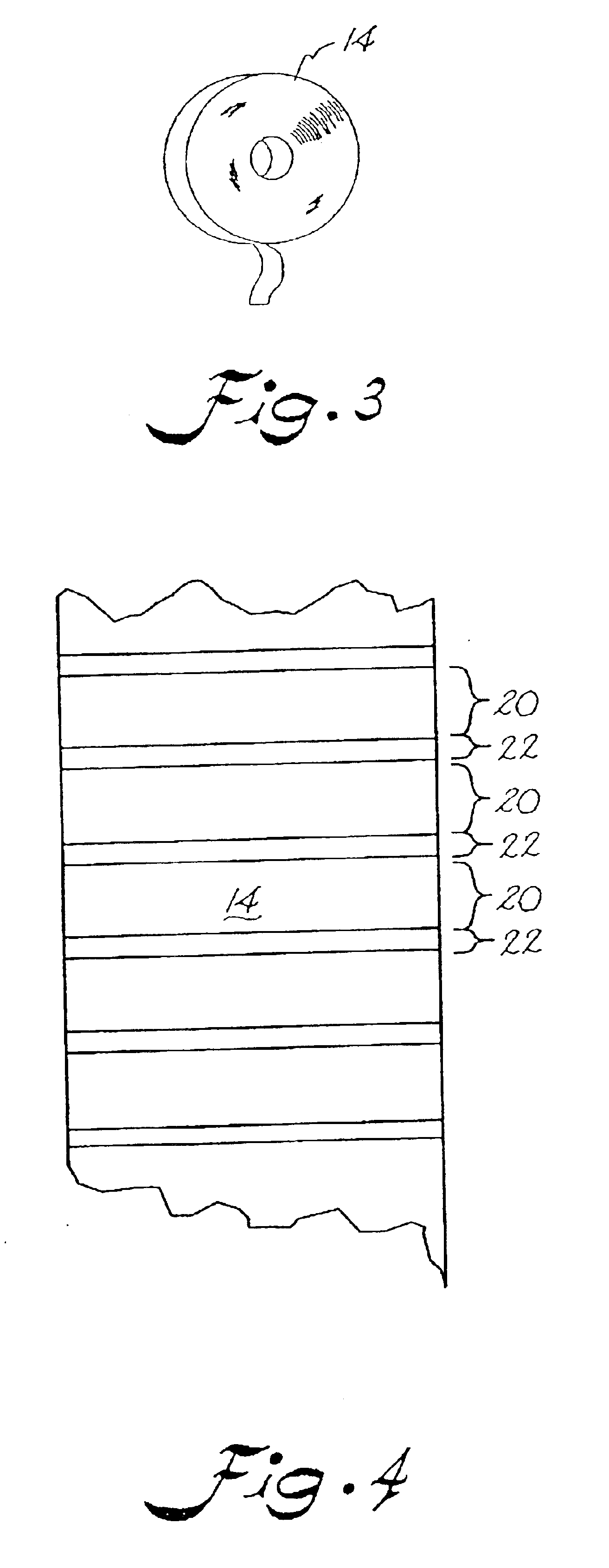Reduced ignition propensity smoking article
a technology of ignition propensity and smoking article, which is applied in the field of wrapping for smoking articles, can solve the problems of fabric igniting and test failure, and achieve the effect of reducing ip and reducing base permeability
- Summary
- Abstract
- Description
- Claims
- Application Information
AI Technical Summary
Benefits of technology
Problems solved by technology
Method used
Image
Examples
example 1
Three smoking article types were made using a paper wrapper, an about 63 millimeter tobacco column length, an about 21 millimeter cellulose acetate non-air diluted filter section, and a cigarette tobacco blend. The cigarettes were made on a conventional cigarette-making machine. Two of the smoking article samples were made using separately banded, reduced IP papers. The third smoking article sample served as a control and was made from a standard cigarette paper. For all smoking article samples in this example paper A was used.
Two banded wrappers were made by applying permeability reducing compositions on base paper A using gravure printing. About 60,000 cigarettes were made for each of a high band weight wrapper type, designated 1-C, a low band weight wrapper type, designated 1-B, and a conventional non-banded wrapper, designated 1-A, as a control. All cigarette types were tested for IP according to the NIST (10-sheet) filter paper IP test and freeburn.
Cigarette type 1-B was made f...
example 2
A survey of derivatized starch products was made to determine their suitability for use in preparing a cigarette having reduced IP. RediFilm-54®, RediFilm-250®, and 11527-2 starch compositions were obtained from National Starch (Berkeley, Calif.) as summarized Table 5.
The various starch compositions were used to make a circumferential band, about 7 millimeters wide, around the body of a smoking article. The circumferential band was positioned about 15 millimeters from the ignition end of the finished smoking article. The smoking article was prepared using cigarette paper A, an about 63 millimeter tobacco column length, an about 21 millimeter cellulose acetate non-air diluted filter section, and a cigarette tobacco blend.
TABLE 5Starch Compositions Used.Starch Product*CharacterizationRediFilm-54 ®hydrophobic derivatized starch“low” degree of substitutionwater-based composition at 24.66 weight percentsolidsRediFilm-250 ®hydrophobic derivatized starch“high” degree of substitutionwater-b...
example 3
Three smoking articles were made using a banded wrapper, an about 63 millimeter tobacco column length, an about 21 millimeter cellulose acetate non-air diluted filter section, and cigarette tobacco blend. The cigarettes were made on a conventional cigarette-making machine. The smoking articles were made using separate banded cigarette papers.
Cigarette type 3-A was made from cigarette paper A gravure printed with a composition containing about 16.4 weight percent RediFilm-54® starch (National Starch, Berkeley, Calif.) and about 83.6 weight percent tap water. The permeability in the banded region was measured as about 4 CU.
Cigarette type 3-B was made from cigarette paper A gravure printed with a composition containing about 18.18 weight percent Ethylex-2015® hydroxyethylated starch (A. E. Staley, Decatur, Ill.), about 1.01 weight percent DAP (Rhodia, Cranbury, N.J.), and about 80.81 weight percent tap water. The composition heated at approximately 87° C. for about 15 minutes.
Cigarette...
PUM
| Property | Measurement | Unit |
|---|---|---|
| width | aaaaa | aaaaa |
| widths | aaaaa | aaaaa |
| widths | aaaaa | aaaaa |
Abstract
Description
Claims
Application Information
 Login to View More
Login to View More - R&D
- Intellectual Property
- Life Sciences
- Materials
- Tech Scout
- Unparalleled Data Quality
- Higher Quality Content
- 60% Fewer Hallucinations
Browse by: Latest US Patents, China's latest patents, Technical Efficacy Thesaurus, Application Domain, Technology Topic, Popular Technical Reports.
© 2025 PatSnap. All rights reserved.Legal|Privacy policy|Modern Slavery Act Transparency Statement|Sitemap|About US| Contact US: help@patsnap.com



